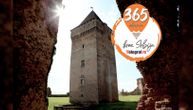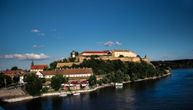A great Serbian poetess lived here: Vrdnik is known for its tower, spa and monastery
It is believed that the development of Vrdnik as a settlement was mostly influenced by the discovery of coal and the construction of a mine
Milica Stojadinovic Srpkinja, one of the first Serbian poetesses, was born in Ravanicka Street No. 33 in Vrdnik. Although she mostly acquired her education through independent work, Milica left a significant mark on the national literature. Today, the house in which she lived in this settlement in Irig is treated as a cultural monument.
Because of the protective Fruska Gora, which rises above Vrdnik, this settlement has a more favorable climate compared to its surroundings.
The first mention of a fortress of the same name was recorded in 1315. About four centuries later, another mention of Vrdnik as a settlement was noted, which developed next to the Vrdnik monastery.
Discovery of coal
It is believed that the development of Vrdnik as a settlement was mostly influenced by the discovery of coal and the construction of a mine back in 1804.
Until 1965, coal was exploited in that area, while the mine was officially closed three years later. In the first half of the last century, one of the most important thermal power plants in the province of Vojvodina was located in Vrdnik.
Vrdnik landmarks
The foundations of the Vrdnik Tower, which is one of the landmarks of this settlement, were built during the Roman rule. Although not precisely determined, there is data that shows that it was built in 287 by Roman Emperor Marcus Aurelius Probus.
A fortification was built on the foundations of the original edifice during the 14th century, the size of which is seen today in the Vrdnik Tower, which is designated a cultural monument of great importance. It is most likely that it was a part of a defensive wall, built to protect the settlement.
There is a Serbian Orthodox monastery of the same name in Vrdnik, also known as Mala ("little") Ravanica. It was probably built during the 13th century and is considered one of the most important monasteries on Mt. Fruska Gora. Since 1811, a part of the relics of Serbian medieval Prince Lazar Hrebeljanovic have been kept at the monastery, as well as a part of the relics of Saint Teodor Tiron and the Holy Great Martyr Anastasija.
A bust of Milica Stojadinovic Srpkinja, erected in 1912, can be seen in the monastery's yard.
Vrdnicka Banja (spa) was created as coal was extracted in this area. The water that penetrated the main, southern shaft, with temperatures between 34 and 36 degrees Celsius, was used to form a health resort.
Tests of the thermal and mineral water of Vrdnicka Banja determined that it helps patients suffering from certain types of rheumatism and neurological diseases, aids recovery after bone fracture and from sports injuries. Various treatment methods are available at the Termal Institute for Special Rehabilitation, such as hydro therapy, electro and kinetic, as well as physical therapy and acupuncture.
(Telegraf.rs)

